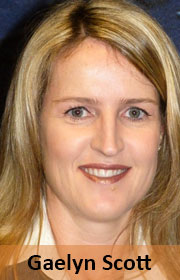 On 22 November 2013, the supreme court of appeal (SCA) handed down a rare trademark judgment. It’s marked on the judgment as one that’s not worth reporting in the law reports, which is a great pity given that is of considerable importance.
On 22 November 2013, the supreme court of appeal (SCA) handed down a rare trademark judgment. It’s marked on the judgment as one that’s not worth reporting in the law reports, which is a great pity given that is of considerable importance.
The case pitted international telecommunications operator Orange against a local accounting software company.
The issue was very simple: was the local company entitled to a trademark registration for the mark Orangeworks for computer software in the face of an earlier application by Orange to register the trademark Orange for a wide range of goods that included software?
Both the registrar of trademarks and a full bench of the high court in Gauteng had found that the local company was entitled to trademark registration on the basis that there was unlikely to be confusion. However, the SCA overruled the earlier findings, holding that there was a likelihood of confusion. It made a number of important findings.
The appeals court said that the earlier tribunals had misapplied themselves in that they had both based their decisions on the fact that, whereas the international company used the trademark in the telecoms industry, the local company used its trademark in the accounting industry.
But in trademark oppositions, you need to consider not just what the parties are doing, but what they might lawfully do with their trademarks. The SCA said this: “In opposition proceedings, the question that falls to be decided is not how the parties use or intend to use their marks, but how they would be entitled to use them if both were to be registered — that is, how they might notionally be used.”
As both trademarks could lawfully be used for computer software, the issue was simply whether there would be confusion if both companies were to do so. It’s a little alarming that this matter had to go all the way to the SCA before this rather elementary point was recognised.
The SCA referred to some earlier South African trademark decisions, including the venerable case of Plascon Evans Paints Ltd v Van Riebeek Paints (Pty) Ltd 1984 (3) SA 623 (A). It said all the things that courts say in trademark cases: that the issue is not whether everyone will be confused but whether a substantial number of people will be; that you don’t actually have to show that a substantial number of people will believe that the one company’s goods are the others, but simply that they will be left wondering about the origin of the goods; that you must consider the matter through the eyes of the average consumer who has imperfect recollection; that you must consider the sense, sound and appearance of the trademarks; that you must consider how the trademarks will be seen in the marketplace, both side-by-side and separately; and that you must consider the dominant feature and general impression of each trademark.
But then the SCA went slightly off script. It said that ultimately it’s a “value judgment to be made by the court, dictated by the overall impression created by the marks, given their respective characteristics, and the circumstances in which they are likely to be encountered, instead of being drawn into excessive analysis.” It said that prior cases are of little assistance because each case is so different.
In order to persuade a tribunal that confusion between two trademarks is unlikely, lawyers like to show that the common feature is in common usage. But in this case, the SCA found that evidence of extensive use of the word “orange” in company and domain names was unhelpful, because “many of those names might be distinctive by virtue of their composition or association, and others might themselves be confusingly similar to the mark in the present case, all of which begs the question that confronts us”.
Another factor that’s often raised in trademark cases is the likely consumer, the thinking being that the more educated and discerning the consumer, the smaller the chance of any confusion. But the local company’s evidence in this regard did not impress the court either. The court said this: “I have no doubt that computer software for accounting is indeed purchased with considerable care, but confusion need not be lasting for it to disqualify a mark from registration. It is sufficient if it is confusing only for a short time, sufficient to attract initial interest, albeit that the confusion might later be cleared up.”
The court felt that the common feature, the word “orange”, was highly distinctive: “I accept that ‘orange’ is an ordinary English word, in wide use to describe a colour or a fruit, and is not a constructed word finding its distinctiveness in the word itself. But to my mind the dominant feature of the word when used as a mark in this context, is that in its ordinary meaning it has no association with computer software or computer technology. It is precisely the absence of any natural association that makes the mark distinctive and catches attention.”

Which made the likelihood of confusion very strong: “To my mind it is that dominant and catching feature that is immediately brought to mind by the mark Orangeworks, aurally, visually and in concept. The suffix “works” — a word that might at best suggest an imprecise metaphor — trails off considerably when the mark is expressed orally, is dominated visually by the distinctive Orange when written, and is entirely overshadowed by the unusual conceptual use of Orange in association with technology. In my view, the mark is indeed likely to cause at least initial confusion when used in that context, albeit that the initial confusion might soon be cleared up.”
Which meant that the appeal had to succeed, as did the opposition to the application for registration of the trademark Orangeworks.
This judgment is likely to have a significant impact on trademark law and practice. The most noteworthy aspect of the judgment is probably the reference to what’s sometimes referred to as “initial-interest confusion”, and the apparent acceptance that short-term confusion is sufficient — it’s a pity that this issue wasn’t discussed in detail.
It’s perhaps also a pity that there was no real discussion on what, if any, special factors need to be considered in cases where the one trademark wholly incorporates the other (as is the case with Orangeworks and Orange). There have, for example, been quite a few European Union and UK cases that have discussed this point, including the famous case involving the trademarks Life and Thomson Life. The approach there seems to be this — if the earlier trademark still has an independent distinctive role in the composite trademark, irrespective of whether or not it is the dominant element, there will be a likelihood of confusion.
The right result was probably reached, but it’s a pity that the court didn’t go into the law in a little more detail.
- Gaelyn Scott is head of and director in ENSafrica’s intellectual property business. The lawfirm did not represent any of the parties involved

